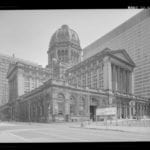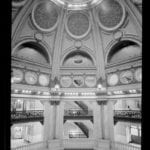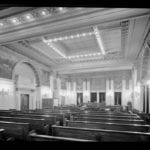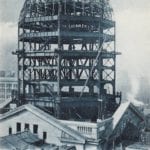bldg. 51 museum adds historically important figural ornament from non-extant chicago federal building
This entry was posted on September 12 2016 by Eric
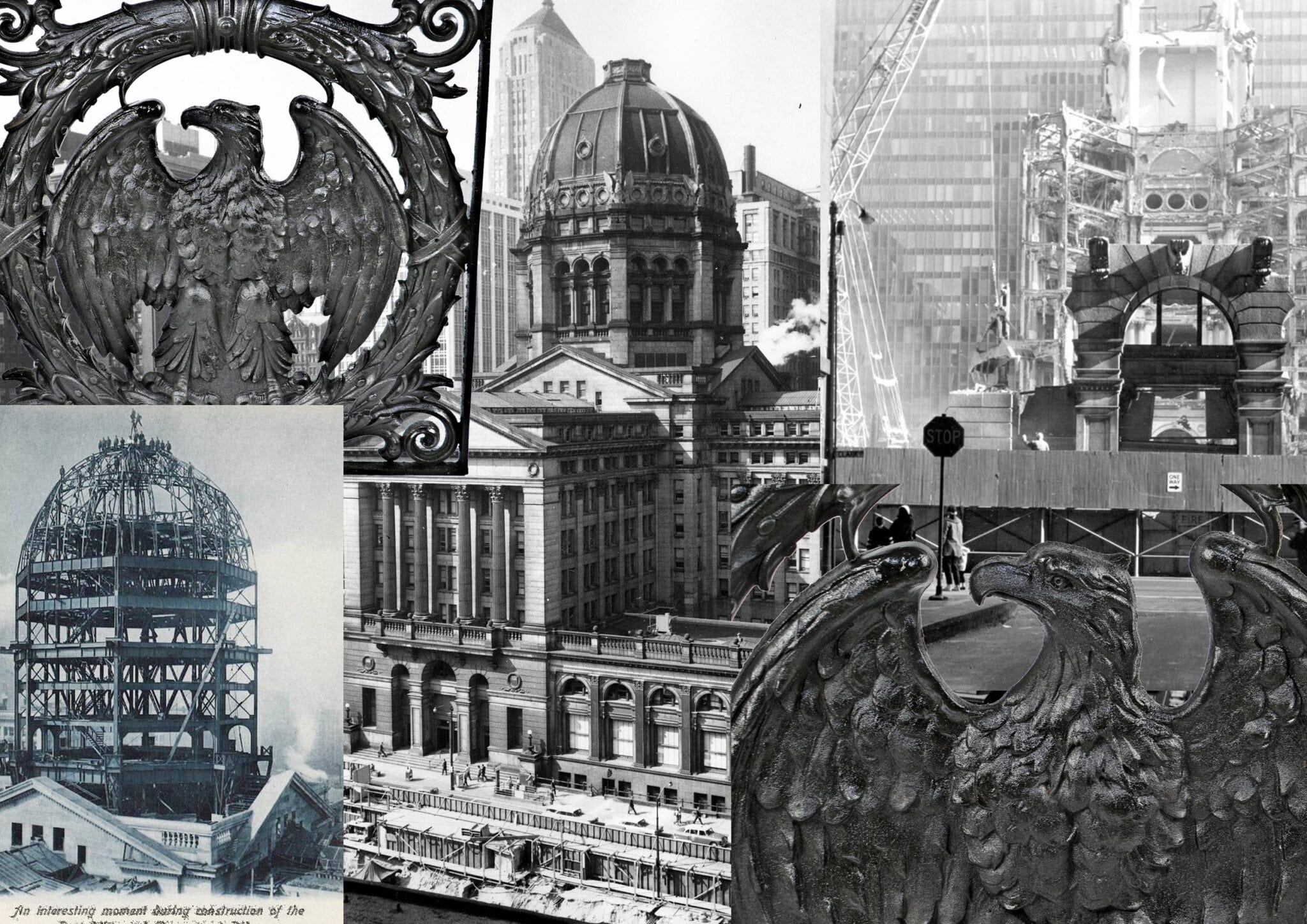
the bldg. 51 museum has secured several historically important chicago building artifacts over the past month that are just now being carefully documented and photographed for exhibition in the ever-growing collection. earlier this week it began with an all original heavily ornamented figural cast iron panel salvaged long ago from henry ives cobb's federal building (1898), prior to its senseless demolition in 1965.
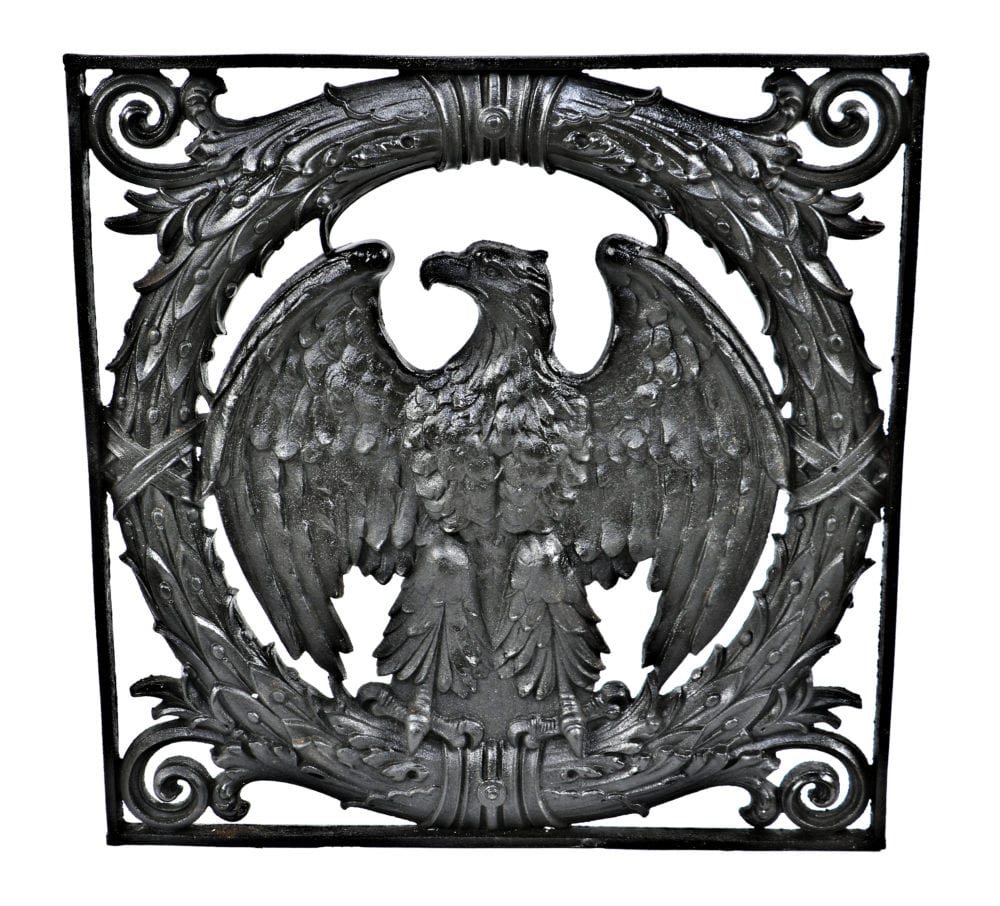
the square-shaped panel was originally an integral component of an interior elevator door. the centrally located spread-winged eagle perched on a laurel wreath is accentuated by elegant scrollwork emanating from each of the four corners. identification of the metal fabricator is currently underway, but the winslow brothers of chicago remain a strong candidate since so many 19th and early 20th century commercial structures in and around downtown chicago were outfitted with their brass, bronze, and ironwork. the single-sided decorative panel was likely treated with a "rust proof" bower-barff finish, but that has either been altogether removed or covered over in black paint. regardless, the museum quality panel exhibits crisp detailing and is free from breaks, cracks or old repairs.
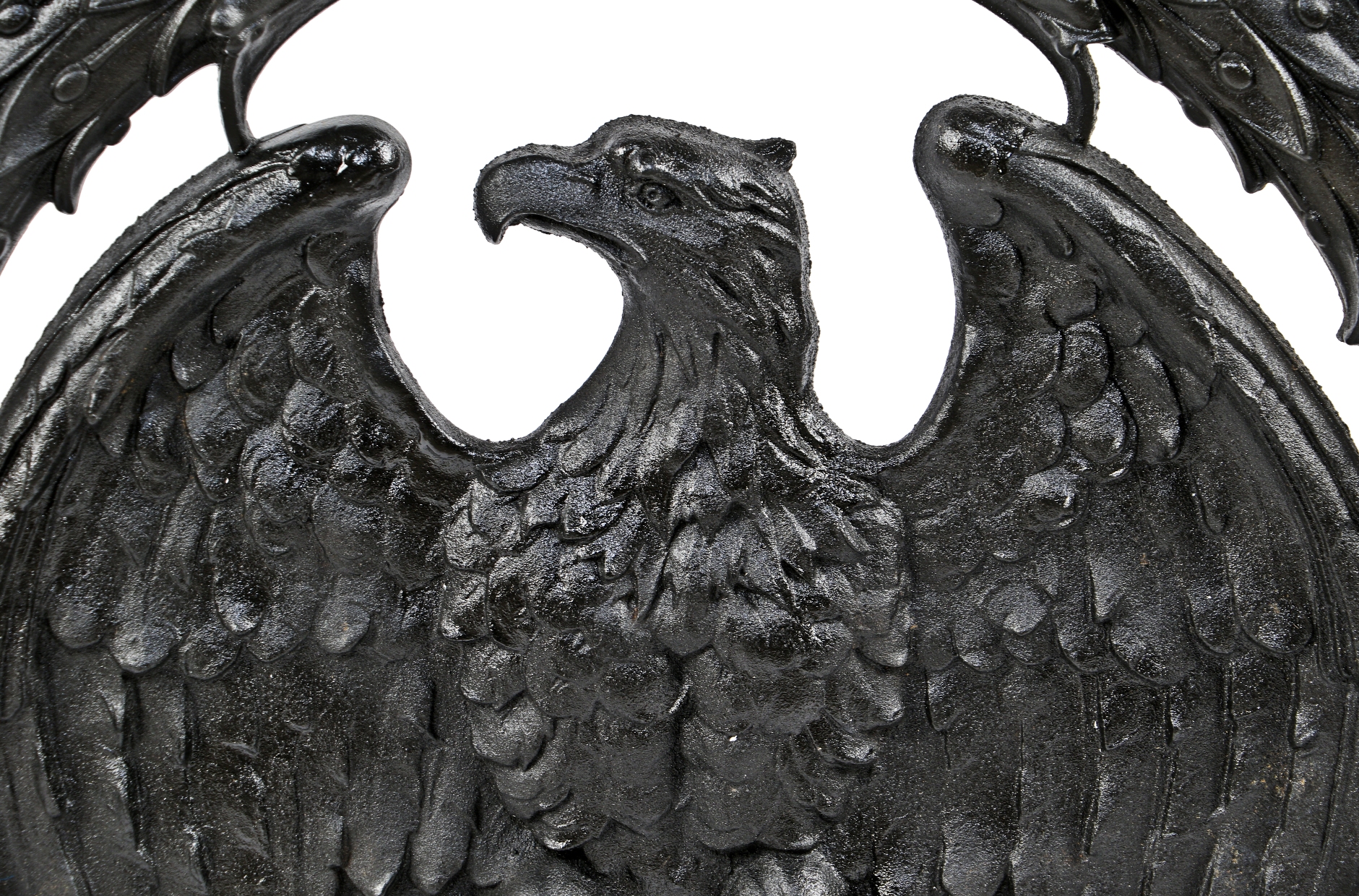
the non-extant beaux-arts style chicago federal building (1898-1905) was designed by notable chicago architect henry ives cobb. the floorplan consisted of a six-story greek cross resting atop a two-story base with raised basement. the building's most distinctive feature consisted of a centrally located gargantuan dome that held eight additional floors of office space (within its drum), giving the structure a total of sixteen floors. the topmost section contained a flashy gilt finish. the structure was home to federal courts, the main post office and other government bureaus. the federal building was built on the site of a post office, courthouse and custom house built in 1880.
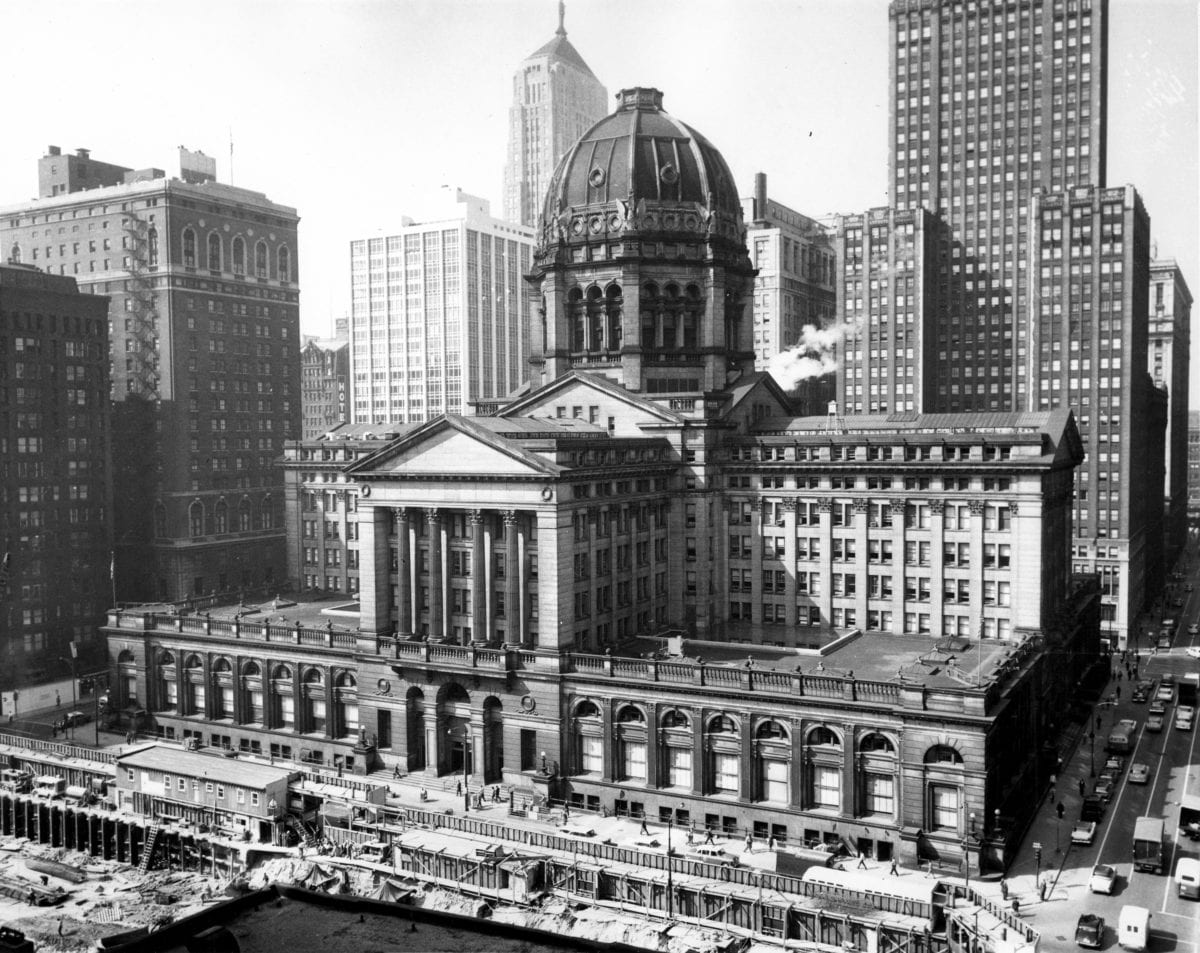
the federal building was spearheaded by postmaster washington hesing with backing by civic leaders and the illinois' members of congress. the explosion of chicago's population, especially after the world's columbian exposition of 1893, strained the earlier facility beyond capacity. when the exposition began, the post office department in chicago employed 998 clerks and 935 carriers. by the time congress approved funding for a new building, the post office had expanded to 1,319 clerks and 1,096 carriers. other agencies housed in the building complained of poor planning and shoddy construction which resulted in crumbling plaster, broken plumbing and flooding. congress passed a bill in late 1894 that president grover cleveland signed on february 13, 1895, appropriating $4 million to demolish the existing structure on the site and erect a new one. the 1880 building was considered dangerous and it was inadequate to house all the federal agencies in the city whose offices consequently were spread among several buildings. on january 20, 1896, congress approved an additional $25,000 to employ a special architect. the chicago federal building was the first government structure constructed with the purpose of housing the post office.
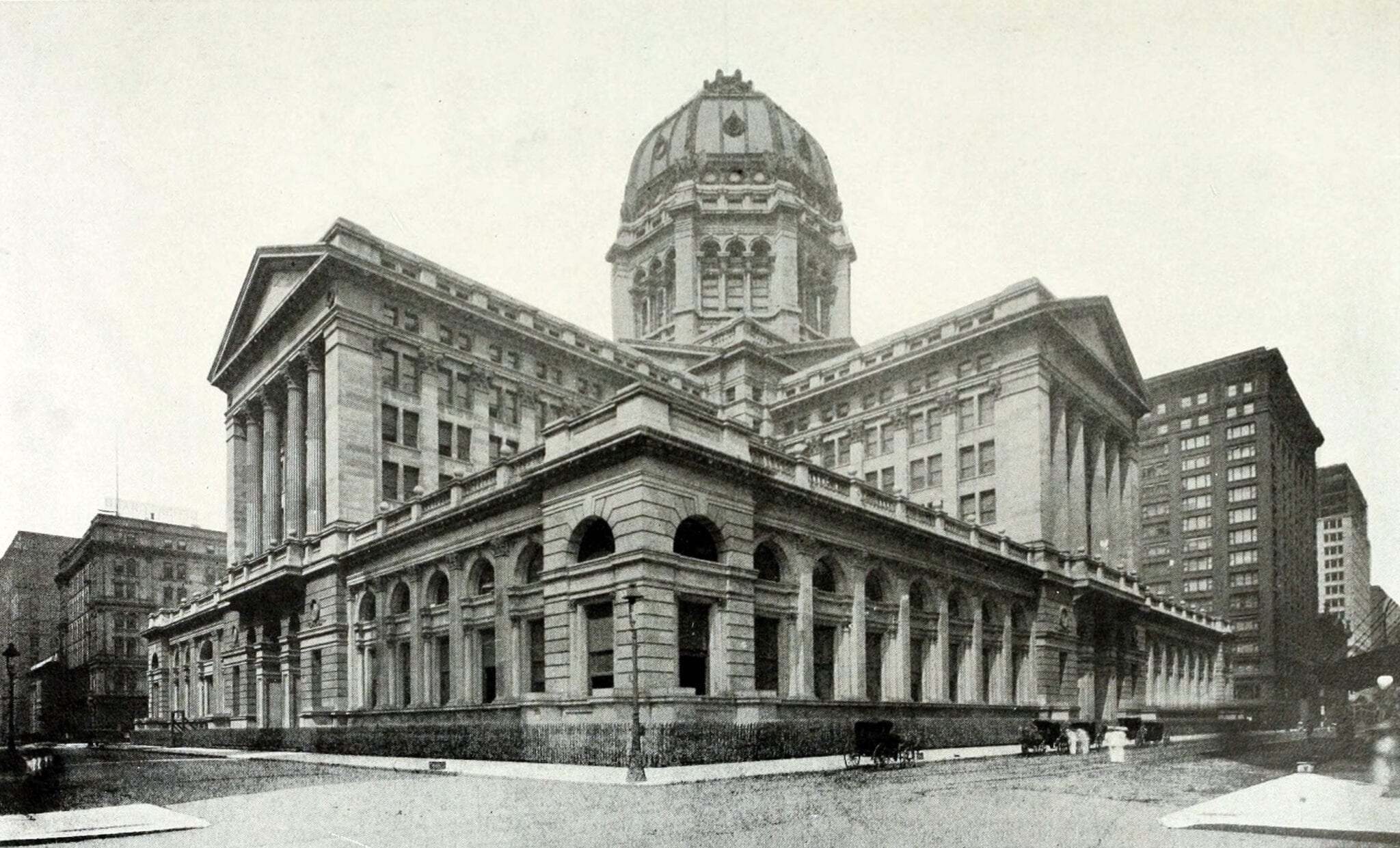
demolition began on the old building in june 1896 after the post office relocated to a temporary building on the site now occupied by the 333 north michigan avenue building. foundation work began in august 1897 and was completed in september 1898 at a cost of $208,000. the foundation was supported by wooden piles driven 72 feet below street level. the basement and first two floors covered the entire site. on april 30, 1898, work for the superstructure was awarded to john pierce, a new york contractor, who submitted a bid of $1,897,000. the building took seven years to construct because government policy at the time was to appropriate only enough funds for each contract as it was awarded. there was no general contractor and over 100 separate contracts were awarded during the building's lengthy construction. the completed building reached a height of 297 feet and was dedicated by president william mckinley october 9, 1899, which happened to be the twenty-eighth anniversary of the great chicago fire. the areas for the post office were completed in 1904 and other agencies occupied their spaces in 1905.
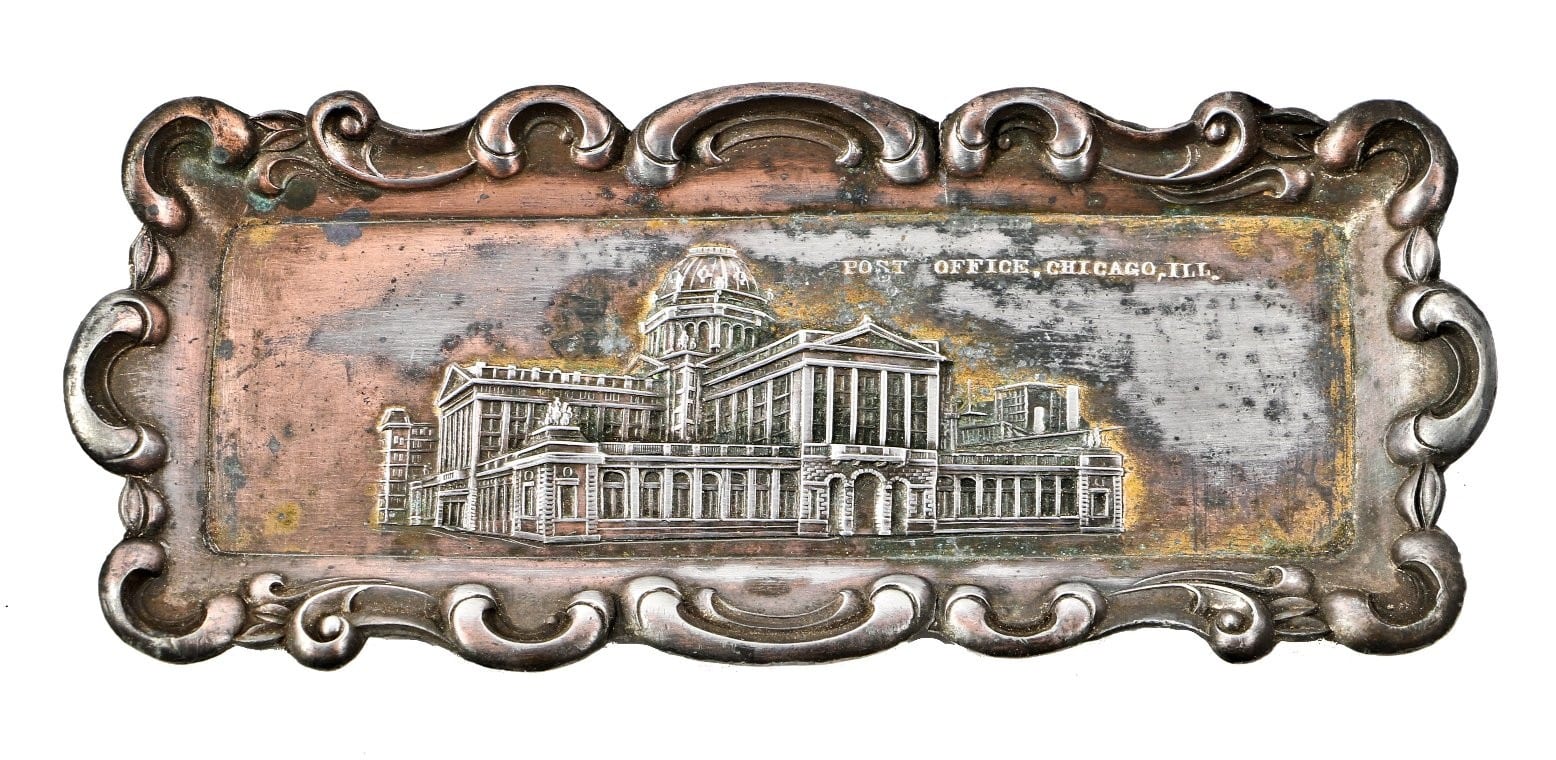
the federal building was a steel frame structure with exterior walls of comprised of face brick sheathed with 500,000 square feet of gray granite quarried from mount waldo, maine. the roofs were covered vitrified tile and the dome was covered with gilt glass tiles. the plan called for the post office to occupy the basement and two lower floors. the sixth, seventh and eighth floors of one wing held the courts, judges, clerks and us marshal. the floors in the dome were reserved for the civil service commission, railway mail service and weather bureau with other agencies occupying the remaining space.
the base consisted of a central entry on each facade flanked by eight bays of windows. the bays were separated by corinthian pilasters with arches over the windows of the second floor. a cornice topped the base on all four facades. four corinthian columns extending from the third to sixth floor supported a pediment on the face of each armof the cross. the wings on the north-south axis held seven bays long while the wings on the east-west axis held five bays as the building was situated on a rectangular lot. the bays each held two windows grouped vertically and were separated by corinthian pilasters. the eighth floor was housed in shed dormers extending from the gabled roof. the dome was octagonal with a buttress at each corner of the drum. the buttresses were topped by corbels supporting a large double cornice encircling the sixteenth floor with a large eagle perched atop the corbels. the windows of the ninth through twelfth floors were set into three arches supported by more corinthian style columns. between the eagles, were three circular windows with elaborately carved frames and above, another circular window pierced the midpoint of each face of the dome.
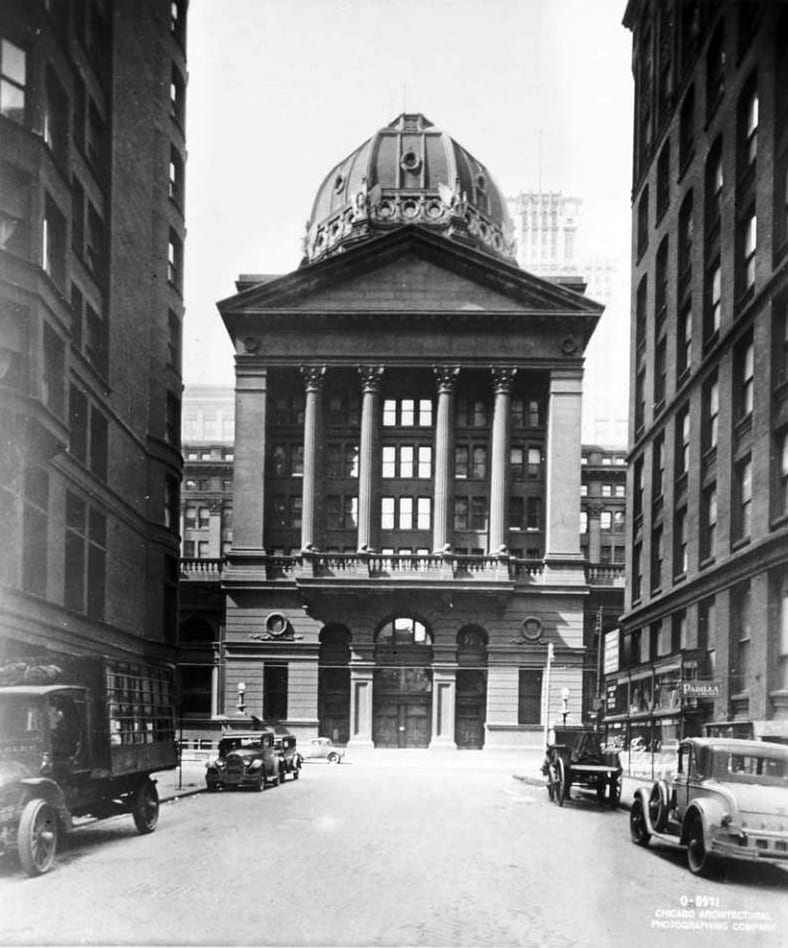
after construction was complete, more than $2,000,000 remained for interior decoration of the chicago federal building. the four wings met under the dome to form an octagonal rotunda, inspired by imperial roman architecture, that was open to the ninth floor. the rotunda's 100 foot diameter made it larger than that of the united states capitol in washington, d.c.the federal building was also the tallest capitol-style building constructed in chicago, with the exception of the 1893 world's columbian exposition buildings, all of which were demolished. under the dome was a large public space surrounded by the floors containing office space.

interior details were accented with terra cotta and scagliola. doors were oak with brass doorknobs containing "us" monograms. mahogany wood was used in courtrooms and other offices. marble from tennessee, vermont, maine and italy was used in corridor floors, wainscoting and stairways. floors in the rotunda were marble accented with mosaic tile while railings and elevator grilles throughout the building were comprised of iron. the ceilings were framed by classical egg-and-dart mouldings. the four courtrooms on the sixth floor contained a series of murals depicting historical moments in the development of law.
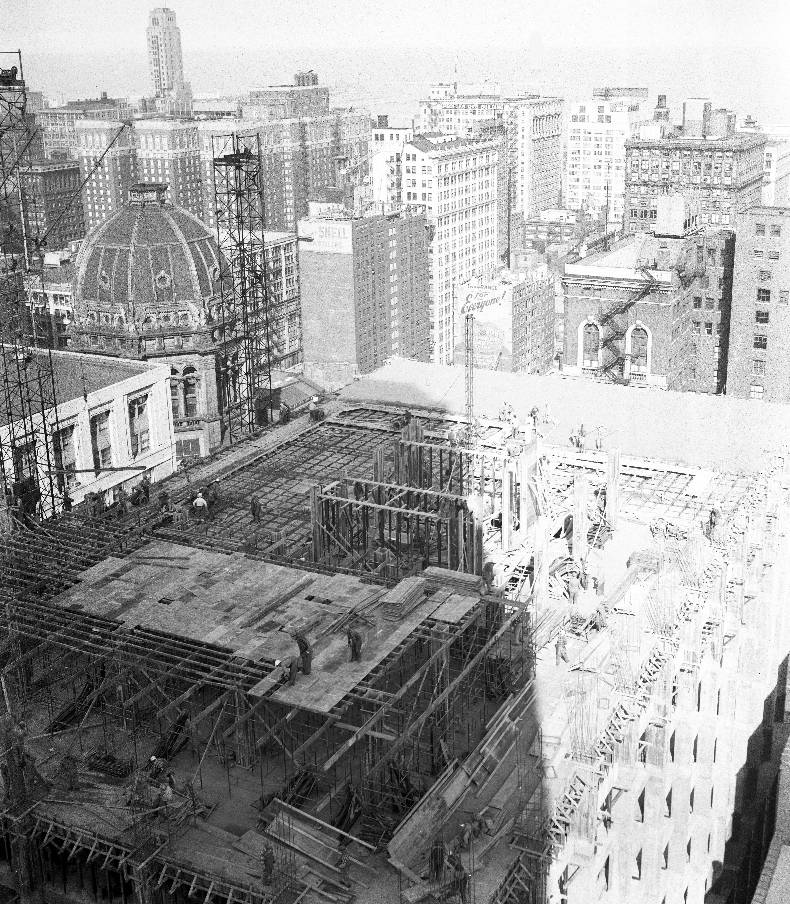
when the district and circuit courts and several agencies relocated to the newly-built dirksen federal building across dearborn street the building was demolished in 1965. the 45-floor kluczynski federal building and loop postal station, designed by ludwig mies van der rohe, were built in its place.
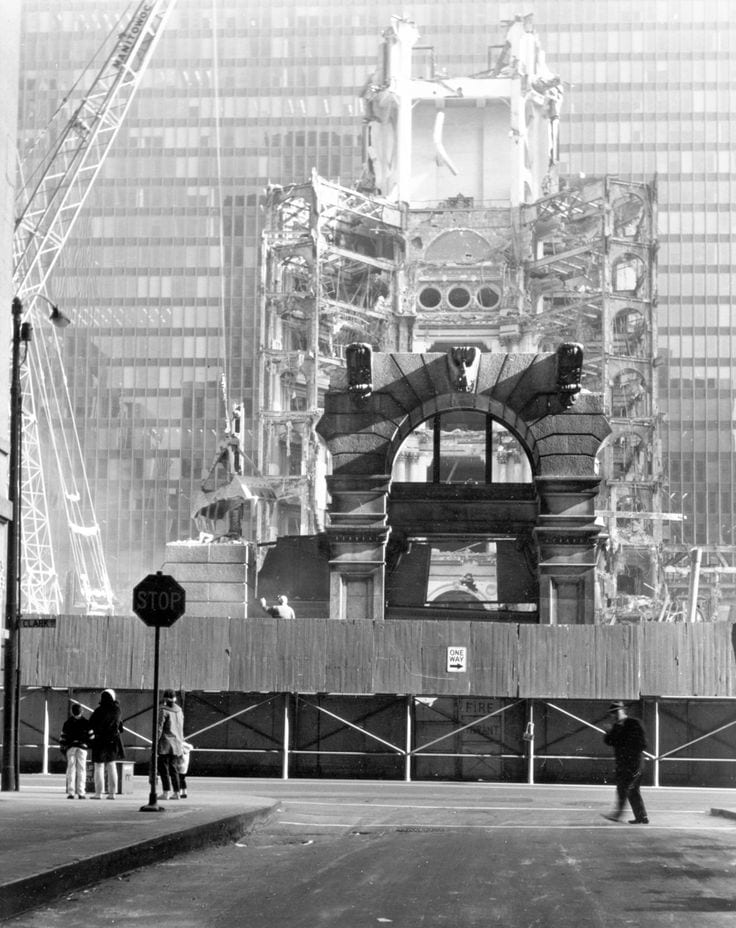
This entry was posted in , Miscellaneous, Bldg. 51, New Products, Events & Announcements, New Acquisitions, Featured Posts & Bldg. 51 Feed on September 12 2016 by Eric
WORDLWIDE SHIPPING
If required, please contact an Urban Remains sales associate.
NEW PRODUCTS DAILY
Check back daily as we are constantly adding new products.
PREMIUM SUPPORT
We're here to help answer any question. Contact us anytime!
SALES & PROMOTIONS
Join our newsletter to get the latest information

